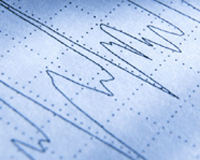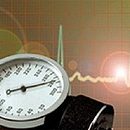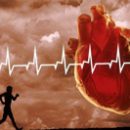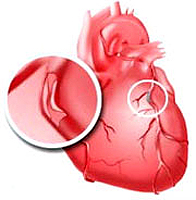Bradycardia is a decrease in heart rate. Pronounced bradycardia leads to a violation of blood supply to organs and tissues. The main symptoms of the disease are weakness and short-term seven.
Content
Concept of bradycardia
 Bradycardia - reduction of heart rate up to 60 and less than 1 min in an adult (up to 100 in newborns, up to 80-70 in children from 1 to 6 years old). Heart abbreviation frequency from 45 to 60 per 1 min is sometimes found in almost healthy adults. With increasing body temperature on 1 °From the heart rate is usually increasing - about 10 blows in 1 min. With some infectious diseases (influenza, meningitis, abdominal typhoid) of such a change in the pace of work of the heart, it is not noted that they can also be called relative bradycardia, it can also be said about it when the high blood pressure is inconsistent with the rare pulse.
Bradycardia - reduction of heart rate up to 60 and less than 1 min in an adult (up to 100 in newborns, up to 80-70 in children from 1 to 6 years old). Heart abbreviation frequency from 45 to 60 per 1 min is sometimes found in almost healthy adults. With increasing body temperature on 1 °From the heart rate is usually increasing - about 10 blows in 1 min. With some infectious diseases (influenza, meningitis, abdominal typhoid) of such a change in the pace of work of the heart, it is not noted that they can also be called relative bradycardia, it can also be said about it when the high blood pressure is inconsistent with the rare pulse.
Distinguished sinus bradycardia due to conduction disorders or heart rhythm, which occurs not in the sinus node. Sinus knot is a rhythm driver and regulates heart cuts.
Sine bradycardia is associated with a decrease in the ability of the sinus unit to independently generate a nervous impulse and cause the myocardium cuts. There is such a state, for example, due to the deficiency of the thyroid hormones, excessive content in the blood of bile acids, as well as with the damage to the node with dystrophic or inflammatory processes.
Causes of bradycardia
Bradycardia may occur both in physiological conditions (for example, during sleep, in peace in athletes) and many diseases. With an increased excitability of the wandering nerve, even a small pressure on the carotid sine (tight collar, tight tied tie) can cause severe bradycardia, sometimes with fainting states. Bradycardia is observed in neurosis with vegetative-vascular dysfunction, with an increase in intracranial pressure (hemorrhages in the brain, edema or brain tumor). In my bradycardia's micasedema is usually proportional to the severity of hypothyroidism.
Limited damage to the sinus unit sometimes leads to a pronounced violation of its function manifested by bradycardia, or alternating bradycardia and tachycardia, change of rhythm drivers, which are denoted as a sinus node weak syndrome (syndrome «Tahi Brady»). It is observed during myocardiodistracy, myocarditis, cardiosclerosis. These diseases can be the cause of myocardial conductivity violations leading to the development of chronic bradycardia. The acute development of bradycardia (sinus or heterotopic) is sometimes noted with myocardial infarction.
Basic symptoms of bradycardia
Moderate bradycardia usually does not lead to violations of blood supply. Site complaints, short-term semi-threat or trimming conditions, angina, collapse, the development of heart failure is possible with a sharp bradycardia (less than 40 heart abbreviations in 1 min), in bradycardia, occurring against the background of severe lesions of myocardium, and when alternating periods of pronounced bradycardia with tachycardia attacks. One of the manifestations of a sharp slowdown of the heart rate may be Morgali-Adams-Stokes syndrome. In the presence of a fainting state, there is a threat of fatal outcome from the stop of the heart.
In all cases of pronounced bradycardia with the diagnostic purpose, registration of ECG is required. If bradycardia is periodic, it is desirable to conduct a long-term (Holter) monitoring of ECG to detect it.
Bradycardia treatment
Bradycardia treatment is advisable only if there are circulatory disorders associated with it, in particular, with complaints of patients with attacks, dizziness. Using drugs, ephedrine, izadrin, caffeine, Eleutherococcus Extracts or ginseng root and t.NS. In individually selected doses.
With pronounced acute bradycardia, the patient should urgently hospitalize. Emergency therapy in the pre-hospital stage includes intravenous administration 0.5-1 ml of atropine. In the hospital sometimes resort to electrocardiosulation. In suspected, any drugs affecting the heart rate frequency are contraindicated in suspected syndrome, affecting the frequency of cardiac rhythm (antiarrhythmic drugs are prescribed only after installing a permanent pacemaker).









